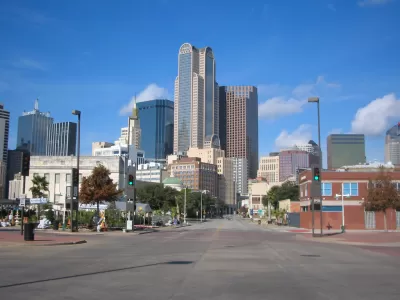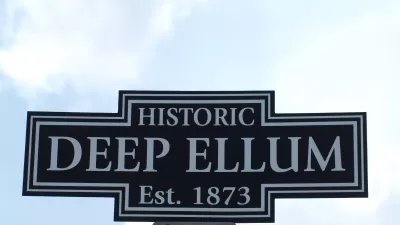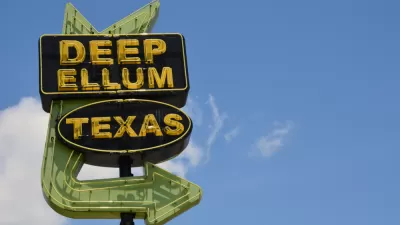Local officials, planners, and other civic leaders have joined together to look at how the city can bring neighborhoods split by freeways back together again.

Brandon Formby reports in The Dallas Morning News on a new program lead by the Texas Department of Transportation in partnership with local planners and civic leaders. The goal of the new program called CityMAP is to produce a menu of option for how the city can begin to rebuild, tweak, or replace existing freeways surrounding downtown Dallas to overcome the freeway as a physical barrier that has separated the downtown core from surrounding neighborhoods. An existing example for innovative thinking is the city's Klyde Warren Park, built on a deck over a portion of the Woodall Rodgers Freeway, and opened in 2012. The park has become a popular spot for families and recreationists. However, future transit improvements, including the construction of a high-speed rail station and expansion of the rapid transit system through downtown, have also spurred new thinking for increasing connectivity throughout the city.
"The goal isn’t just to create more deck parks, though more could be in store. There are deeper hopes that updating major infrastructure in the urban core will restitch neighborhoods, spur developments with a dense mix of residences and job centers and give thousands of people the option to ditch their cars altogether."
Three meetings will be held in October and November to get public input on new ideas and potential solutions to create a more integrated downtown core, with the recognition that beyond just a destination, downtown has grown into a thriving live-work community.
FULL STORY: CityMAP planners envision future of downtown Dallas’ aging highways

Alabama: Trump Terminates Settlements for Black Communities Harmed By Raw Sewage
Trump deemed the landmark civil rights agreement “illegal DEI and environmental justice policy.”

Study: Maui’s Plan to Convert Vacation Rentals to Long-Term Housing Could Cause Nearly $1 Billion Economic Loss
The plan would reduce visitor accommodation by 25% resulting in 1,900 jobs lost.

Why Should We Subsidize Public Transportation?
Many public transit agencies face financial stress due to rising costs, declining fare revenue, and declining subsidies. Transit advocates must provide a strong business case for increasing public transit funding.

Paris Bike Boom Leads to Steep Drop in Air Pollution
The French city’s air quality has improved dramatically in the past 20 years, coinciding with a growth in cycling.

Why Housing Costs More to Build in California Than in Texas
Hard costs like labor and materials combined with ‘soft’ costs such as permitting make building in the San Francisco Bay Area almost three times as costly as in Texas cities.

San Diego County Sees a Rise in Urban Coyotes
San Diego County experiences a rise in urban coyotes, as sightings become prevalent throughout its urban neighbourhoods and surrounding areas.
Urban Design for Planners 1: Software Tools
This six-course series explores essential urban design concepts using open source software and equips planners with the tools they need to participate fully in the urban design process.
Planning for Universal Design
Learn the tools for implementing Universal Design in planning regulations.
Smith Gee Studio
Alamo Area Metropolitan Planning Organization
City of Santa Clarita
Institute for Housing and Urban Development Studies (IHS)
City of Grandview
Harvard GSD Executive Education
Toledo-Lucas County Plan Commissions
Salt Lake City
NYU Wagner Graduate School of Public Service





























